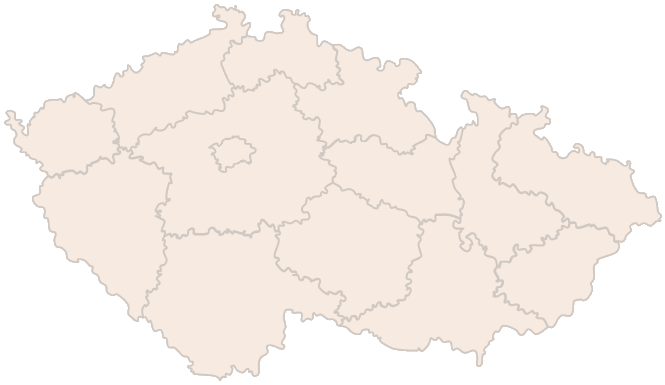What is the vehicle register and how does it work
The Vehicle Register is the official database of all road vehicles registered in the Czech Republic. This database is administered by the Ministry of Transport, but individual operations are carried out by municipal authorities of municipalities with extended competence, typically the transport departments of municipal authorities. Vehicle registration is compulsory for all vehicles travelling on public roads. Vehicle registration is regulated by the Act on Conditions of Vehicle Operation on Roads.
Vehicle registration includes, inter alia, the following data:
- vehicle Identification Number (VIN),
- technical parameters (engine capacity, power, fuel),
- data on the owner and operator,
- tachometer reading,
- validity of the technical inspection,
- environmental parameters (emission class, etc.).
These data allow, for example, the police or the authorities to trace the history of the vehicle during an inspection and to find out its environmental impact or legal status.
Vehicle registration: when and how you need to act
Every road vehicle intended for use must be entered in the register. This applies to new cars as well as used cars, motorcycles or work machines. Vehicle registration applies to you in the following situations:
- Buying a new car: Before you put a new vehicle into service, you must register it and have it entered in the register. Dealers usually offer vehicle registration as a bonus as part of their service.
- Selling and buying a used car: Once you buy a car from someone or sell it, you must arrange for the car to be transferred to the new owner within 10 working days.
- Importing a car from abroad: after importing a car into the Czech Republic, you must ensure that it is registered in the Czech registry.
- Change of data: your current personal data must be in the register, so you must report, for example, a change of permanent address, name or company registered office.
- If you do not want to use the car for a longer period of time (e.g. seasonal vehicles, vintage cars, cars without technical support, etc.), you must arrange for it to be deposited. If you want to scrap the car completely, then you must arrange and have it registered for environmental disposal.
- Change of colour or conversion: Some modifications (for example, those that change the characteristics or use of the car) must also be entered on the registration certificate.
If you do not enter the mandatory information in the vehicle register on time, you may be “rewarded” with a fine of up to CZK 50,000. Vehicle registration is therefore not only an administrative obligation, but also legally obligatory.
In order to register your vehicle in the vehicle register, you need a vehicle registration certificate, proof of ownership and proof of identity. Other documents, such as a purchase contract or an emissions test certificate, are also attached when the vehicle is registered.
Are you solving a similar problem?
Not sure how to properly reassign a vehicle or how to treat a purchase contract?
Take advantage of our online legal advice service, you will get an answer quickly, clearly and without unnecessary paperwork Our lawyers will help you with the transfer, verify the contract and advise you how to avoid fines of up to CZK 50,000.
More information
- When you order, you know what you will get and how much it will cost.
- We handle everything online or in person at one of our 6 offices.
- We handle 8 out of 10 requests within 2 working days.
- We have specialists for every field of law.
Vehicle register online: What you can do from the comfort of your home
Thanks to digitalisation, you can now perform many tasks electronically. The online vehicle register is available via the Transport Portal. You can use your eCard, data box or bank identity to log in to this portal.
In the online vehicle register, you can, for example, book an appointment at the office, find out information about the vehicle (e.g. emission standard, date of first registration), apply for an extract from the vehicle register, check whether the vehicle is registered as stolen or check the status of the speedometer according to the MOT test.
On the other hand, for example, you still have to register the vehicle owner in person. Nevertheless, the online vehicle register saves time considerably for other tasks.
Vehicle categories: How vehicles are classified according to their purpose
The vehicle register categorises vehicles according to their design and use. The vehicle categories are based on European directives and are used for various legal purposes, for example, to determine mandatory equipment, emission standards or tax obligations.
The most common vehicle categories are:
- M – motor vehicles intended for the carriage of passengers (e.g. cars, buses)
- N – vehicles intended for the carriage of goods (vans, trucks)
- L – single-track motor vehicles (motorcycles, mopeds, tricycles)
- O – trailers (trailers, semi-trailers)
- T – tractors
- S – working machines
- R – other vehicles which cannot be classified in the above categories
Vehicle categories affect, among other things, the amount of compulsory liability insurance, tolls, the obligation to have an MOT or driving conditions(driving licence).
Tip for article
Tip: Do you want to use your company car for private purposes? Or are you an employer and want to offer this benefit to your employees? Then read on to find out what such a benefit entails.
Why distinguish between vehicle type and type of vehicle?
Many people confuse the terms vehicle type and vehicle type, even though each means something different. Both are important in the vehicle register. The type of vehicle influences the legislative classification, while the type of vehicle determines whether the car can be put into service or what technical restrictions it has.
The type of vehicle is a general distinction based on design and purpose, e.g. road motor vehicle, trailer, work machine, special vehicle, etc.
Vehicle type is a specific series or model approved by the Ministry of Transport (e.g. Skoda Octavia 1.6 TDI). Each type has its own technical parameters which may not be changed without approval.
Classification of motor vehicles: By powertrain, purpose and design
Another useful criterion is the classification of motor vehicles according to technical or operational parameters.
According to the type of propulsion , we can distinguish between vehicles with an internal combustion engine (petrol, diesel), hybrid vehicles (combination of engine and electric motor), electric vehicles (powered exclusively by electricity) and vehicles using alternative fuels – LPG, CNG, hydrogen.
Depending on the purpose of use , these are vehicles for passenger or freight transport, work vehicles (e.g. road sweepers) or special vehicles (ambulances, fire trucks, police vehicles).
According to their design features , vehicles are distinguished by the number of axles, maximum speed or number of seats.
Each of these parameters is recorded in the vehicle register and affects not only the way in which vehicles are registered, but also the calculation of fees, the need for environmental tests or the possibility of operating in city centres.
Tip for article
Tip: Are you planning to buy a new car? We’ll tell you what to look for when buying a new car.
What are the most common mistakes to avoid
People often make mistakes when working with the vehicle register that can have legal consequences. The most common problems are:
- Neglecting to transcribe the vehicle: If the new owner fails to transfer the vehicle within 10 working days, a fine of up to CZK 50,000 can be imposed.
- Change of address or name must be reported within 10 days.
- Purchase contracts without a certified signature: these can cause ownership disputes.
- Errors in contracts: Unclear or incorrect wording can cause problems with registration (e.g. missing date of transfer).
- Unverified odometer: Fraud in vehicle sales can be partially detected through the online vehicle register.
- Inconsistencies between the technical certificate and the reality: For example, different colours, unreported conversions, etc.
- Concealed liens or repossessions: These are often only detected by checking the register.
Correct vehicle registration helps protect both owners and other road users. Thanks to the development of online tools, many tasks have become easier, but accuracy and timeliness still need to be ensured.
Be aware of what the vehicle register says about your car. Whether you’re dealing with a change of ownership, registering an import, or just checking the history of a car, having a good understanding of vehicle categories, types and types will save you a lot of hassle. And for more complex situations (such as ownership disputes or registering an inheritance), don’t hesitate to contact us.
Summary
The Vehicle Register is a key database managed by the Ministry of Transport that records all vehicles in the Czech Republic and is used to check their technical condition, legal status and environmental impact. The register covers new and used vehicles, imports, changes to data, conversions, decommissioning and environmental disposal, and neglecting it can lead to a fine of up to 50,000 CZK. Registration requires a technical licence, proof of identity and other documents (e.g. purchase contract). Thanks to the Transport Portal, some of the tasks can be done online – for example, to check the vehicle’s condition or book an appointment at the office. Vehicles in the register are divided by category (e.g. M – passenger, N – freight, L – motorcycles) and also by type and type, which affects not only their registration but also their operating conditions. The most common errors include late transcription, outdated data, insufficient contracts or undetected legal defects of the vehicle. Correct and timely registration is therefore not only a legal obligation but also a protection for all road users.




